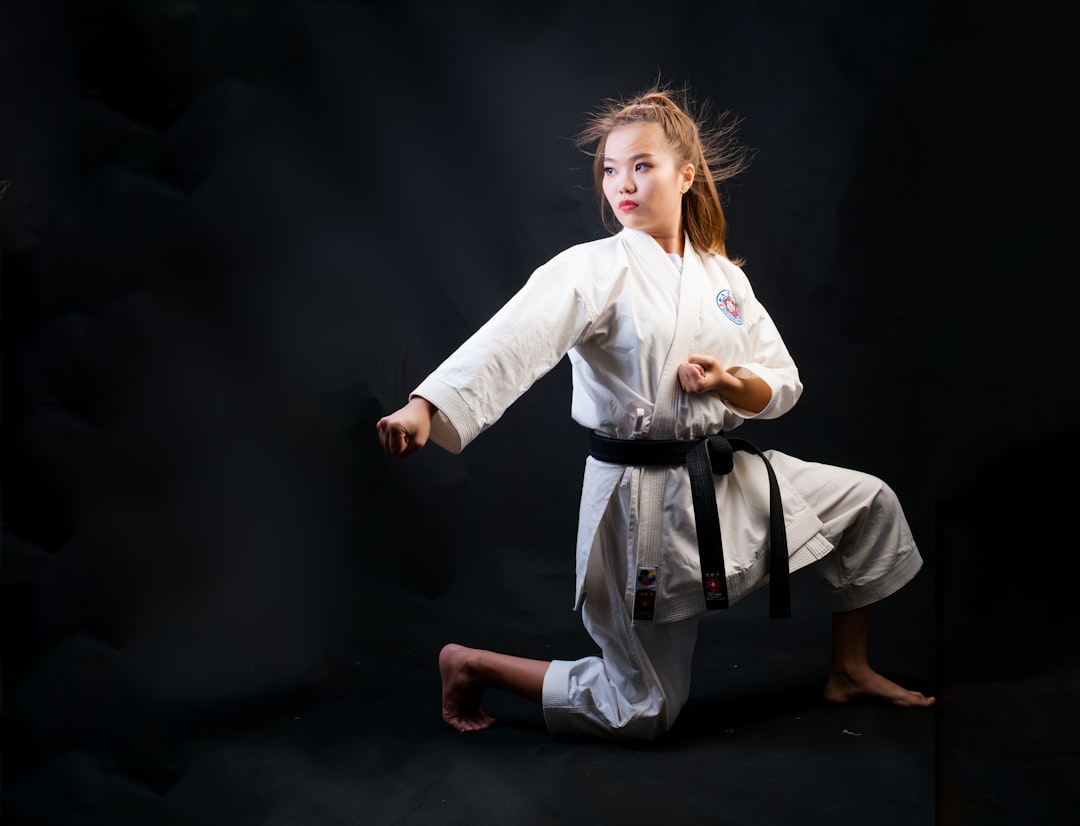Karate uniforms, or gi, are essential to the practice of karate, serving as a symbol of the sport's cultural and historical significance. These garments are made from durable yet flexible fabric, allowing for precise execution of techniques while maintaining traditional aesthetics. The standard gi consists of a top with looped sleeves and matching trousers secured by a belt that signifies the wearer's rank. Evolving from simple white cotton attire in Okinawa to today's diverse range including various materials like cotton blends or polyester, karate uniforms have adapted to meet modern comfort and durability needs while preserving their traditional essence. In competitive karate, these uniforms often come in different colors or designs to distinguish participants. This blend of tradition with contemporary design reflects the dynamic nature of martial arts, ensuring the gi remains a relevant and integral part of the global karate community.
Explore the significance and evolution of traditional karate uniforms known as ‘Gis’ in the world of martial arts. This article sheds light on the essential elements that define a karate uniform and traces its history, traditions, and variations over time. Understand the Gi’s role in the discipline and practice of karate, and discover how modern interpretations honor and expand upon this timeless garment’s legacy.
- Understanding Karate Uniforms: The Gi's Role and Significance
- The Evolution of Karate Gis: History, Tradition, and Modern Variations
Understanding Karate Uniforms: The Gi's Role and Significance

Karate uniforms, commonly known as “keikogi” or simply “gi,” serve as a canvas for practitioners to display their skill and rank. These garments are an integral part of karate practice, reflecting the discipline’s rich history and cultural significance. Crafted from sturdy cotton or hemp fabric, the gi is designed to facilitate movement while providing minimal distraction during practice and competition. The top, resembling a jacket with loops at the wrist, paired with trousers that tuck into a belt signifying rank, forms the traditional ensemble. Are karate uniforms called keikogi? Yes, in Japan, where the term “keiko” means practice or training, “gi” refers to the clothing used specifically for martial arts training. The design of the gi allows for a full range of motion, enabling practitioners to execute techniques with precision and control. It also withstands the rigors of frequent use in training halls around the world, making it both durable and functional. What is the traditional karate uniform called? Known as a “gi,” it is an essential element that honors the traditions of karate while accommodating the needs of modern-day practice.
The Evolution of Karate Gis: History, Tradition, and Modern Variations

Karate uniforms, commonly referred to as “Gis,” have a rich history deeply rooted in the practice’s origins. Originating in Okinawa, these garments have undergone significant transformations over time, adapting to both cultural and functional needs. Historically, the Gis were simple, white cotton garments modeled after farm worker attire. They were intended to provide a standardized training uniform that allowed for ease of movement and visibility during practice, which is as relevant today as it was then. As karate spread beyond its native islands, the design of these uniforms evolved to suit different climates and training conditions, leading to variations in material, weight, and cut. Today, karate Gis come in a variety of styles, with some adhering closely to traditional designs while others incorporate modern elements for enhanced functionality or personal expression. What materials are best suited for practicing karate? How have contemporary practices influenced the design of karate uniforms? Modern karate Gis are often made from lightweight, breathable fabrics like cotton blends or polyester, providing comfort and durability during intensive training sessions. Additionally, for competitive karate, specialized uniforms may be required, which differ in color or design to distinguish competitors during tournaments. Are the current variations of karate Gis still consistent with the traditional values of karate? While modern adaptations have introduced new materials and designs, the essence of the Gi remains true to its origins, reflecting the discipline, respect, and tradition that are central to karate practice. The evolution of the Gi is a testament to the dynamic nature of martial arts, where tradition and innovation coexist, ensuring that the uniform continues to serve both the cultural heritage and the functional needs of karateka around the world.
Karate practitioners adorn themselves with traditional garments known as “Gis,” an integral aspect of the martial art’s practice and heritage. This article has explored the role and significance of these uniforms, from their origins to the present-day variations that cater to both tradition and functionality. The evolution of karate Gis is a testament to the discipline’s adaptability and respect for its roots. Whether you are new to the art or an experienced martial artist, understanding the essence of the Gi enhances appreciation for the sport and its rich history.
